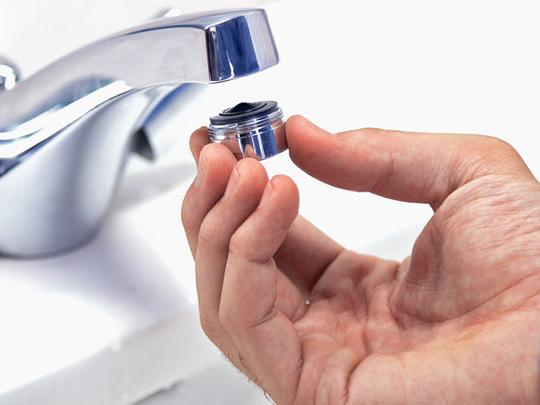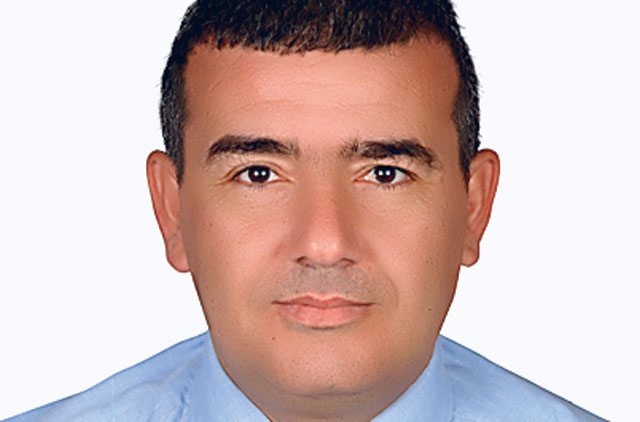
Abu Dhabi: The Environment Agency — Abu Dhabi (EAD) launched a water-saving initiative in May with the hope of saving up to 75 billion litres of water annually.
The campaign, Watersavers, aims to achieve this goal by fitting every single tap in Abu Dhabi's estimated 220,000 households with a simple water-saving device.
Once the installation is complete, it could save up to Dh300 million per year.
The tiny device comprises an O-ring and mesh gauze, costing Dh7.
According to the EAD, the initiative is a win-win deal for the residents as well as the environment. While residents will benefit from at least a 30 per cent reduction in water bills, it offers a sustainable solution that will help avert the looming water crisis predicted for the near future by experts.
In an interview with Gulf News, Dr Mohammad Dawoud, water resources manager at EAD, explains the importance of the campaign and the progress it has achieved so far.
Gulf News: What is the Watersavers campaign?
Dr Mohammed Dawoud: As part of the campaign, we have begun to install tiny, free water-saving devices in every home, school, mosque, government and commercial buildings across the capital.
Within three to five years we hope to cover all taps across the emirate, which is estimated to reduce water consumption in Abu Dhabi by up to 30 per cent. An estimated 75 billion litres of water could be saved every year — which is the equivalent of 30,000 Olympic swimming pools. It is the largest water-saving campaign ever attempted in the Middle East.
Crucially, there is no charge whatsoever to tenants or landlords. EAD will be providing and installing the devices for free.
What is its significance?
Currently, Abu Dhabi has one of the highest rates of personal water consumption in the world, with residents consuming an average of up to 550 litres of water per person per day. This is three times more than the United Nations benchmark rate of 180 litres per person per day.
This consumption, combined with the predicted population growth rates, means we could face water shortages as soon as 2012, which is why we need to act quickly. Quite simply, there could not be enough desalinated water supply to meet forecast demand in the near future.
Since taps account for around 60 per cent of household water consumption, they are the best starting points to cut down on domestic water usage. That is the reason behind this campaign.
How far has the campaign progressed?
The first phase of the campaign began in May, with the aim of installing water-saving devices in every home, government and commercial building in the Tourist Club Area (TCA) by 2011. The target is to complete 55,000 homes, which will involve about 330,000 water-saving devices if five to six water-saving devices are installed on average per household.
So far, we are on target. In the first four weeks, 76,494 water-saving devices were installed in 4,563 premises.
How will residents benefit from the water-saving devices?
It is a win-win deal for the residents and the environment. We estimate that the devices will reduce the water bill by up to 30 per cent.
All that residents have to do is to let the water device installation team in when they visit their homes. The installations take no longer than a few minutes.
The team of trained staff speaks a variety of languages including English, Arabic, Urdu and are well versed in all aspects of plumbing. They are easily identifiable by their Watersavers Campaign uniforms and will carry Abu Dhabi Government identification.
How do the devices work?
The devices fit inside the pipe and reduce the flow of water by mixing it with air, with no noticeable effect to the person consuming the water. We estimate that the flow of a shower will be reduced from 12 to 9 litres per minute, and a tap from either 9 to 6, or 6 to 3 litres per minute.
Could building more desalination plants help ensure water availability?
Building more plants is not a long-term sustainable solution at all. Each plant costs approximately Dh7 billion to desalinate 100 million gallons of water per/day in construction costs alone.
In addition to the cost of building and operating the plants, power and water desalination processing accounts for more than 30 per cent of the UAE's carbon footprint in direct greenhouse gas emissions.
There is another consequence. In the near-shore regions of the Gulf, very high withdrawals of water for desalination locally threaten the biodiversity of the marine environment and are contributing to raising sea temperatures which are currently among the highest in the world.
In Abu Dhabi, we primarily rely on desalinated water from the Arabian Gulf for our water supply, with groundwater and other sources accounting for an increasingly smaller amount of the supply. However, as much as this water visibly surrounds us, we cannot see the water from the Gulf as ‘the answer' to supply concerns.
For more info:
Visit the Watersavers Campaign website at www.watersavers.ae<http://www.watersavers.ae/> or call 800 WATER
Are you concerned about the amount of water wasted in your home? Would you adopt such water-saving devices?













